Set 400 years in the future, in 2417, the TV series The Orville follows the exploits of the U.S.S Orville and her crew exploring outer space. The series is from creator and actor Seth MacFarlane (Family Guy, Ted) who plays the Captain of this ‘mid level’ spaceship. In the series opener, between his ex-wife and the vicious alien Krill, Captain Ed Mercer is not having a good first day on the job. The pilot episode was directed by none other than Jon Favreau.
One of things that makes this show very different is the use of traditional models, thanks to the help from some of Favreau’s senior collaborators such as Rob Legato and Glenn Derry with the main VFX Supervisor Luke McDonald and VFX Producer Natasha Francis. The practical model work was done for the season in one initial major models shoot. The material was then used and reused throughout the 13 part series in much the way it was in the original Star Trek: The Next Generation. Legato and Derry first started working together on Aviator (2004) where Legato was Second Unit Director and Visual Effects Supervisor for Martin Scorsese. Derry also helped Legato as he conceived of the Virtual Production pipeline for Avatar. Legato is currently shooting The Lion King again with Director Jon Favreau.
To help with the visual and special effects model shot design executions, the team worked with Previs specialist Halon. In addition to normal VFX previs work, Halon worked on helping to visualise the model work and how to extend the practical work as it transitioned to pure CGI on some shots.
Legato comments that Orville is, “a homage to Star Trek: The Next Generation (ST:TNG), which was a favourite of Seth MacFarlane. He is basically making his own Star Trek Series, and they wanted to shoot motion control models again.” Rob Legato was famously the visual effects supervisor on 46 episodes of ST:TNG, in addition to co-ordinating 17 other episodes and directing 2 (He also worked on Star Trek Deep Space Nine).
“It is really hard to dig up people who know how to do it, so I called up Glenn and not only did Technoprops (Glenn Derry’s company – now part of Fox) build the model and arrange for the motion control, but they also handled converting the Maya or C4D files converted back into motion control, which all functioned much better than it did on Star Trek,” explains Legato. The team were able to preview, design the shots and work out the lighting before going on the actual stage to film it. “Before, back when I used to do that, there was no preview, you just turned up on stage and had to shoot it. All we had was video playback to try and figure out what it would look like at speed, because we were shooting at 2 frames per second.”
“Seth really liked the show (ST:TNG) and he didn’t want to do a parody of it, he wanted to do a straight up show that was inspired by it, so he could create his own science fiction, next generation-like enterprise – if you’ll pardon the pun. They loved the idea of not doing it all CG and doing motion control ships. There is definitely CG ships in the show, but they wanted to do this original methodology, it’s like going back to the ‘original recipe”… he really wanted to do this, and there are very few people that can do this the way we like to do it.” For example since the days of Aviator, Legato has enjoyed driving CG or practical models with traditional tools such as ‘Panavision’ style Pan and Tilt wheels. “It is really identical to what I did on Aviator, which converted pan and tilt files into a moving buck of an airplane for Leo (DiCaprio) to ride in, same identical thing, except for here I was driving a motion control model, – a sort of live version of it. It was a fun project and much enjoyed and loved by Seth and Jon Favreau – who directed the pilot.”
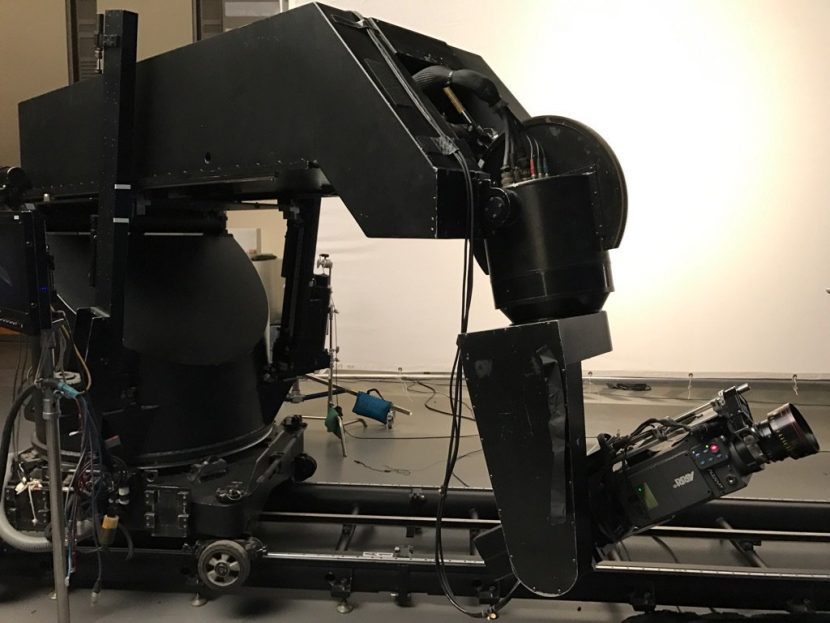
Glenn Derry’s team built the 5 foot space ship, “with all the trimmings,” he explained, “Old school/New school, as we designed it all in 3D but then we built it and shot it on set over the course of two weeks – which was insane – no one is doing motion control like this anymore, it’s maybe 20 years since one of these has been done.” Back then the multi-pass motion control shoots were done Red (orange) Screen, as the red lights produced a very narrow frequency response that would key well, and without actors red was a viable colour. Orville benefited from much newer keying technology and could use more standard blue screens in 2017. “These days we get to cheat a bit and use the standard chroma blue,” Derry remarks. The team did six passes per shot, starting with the beauty pass, then “just a fill pass with no key light, mate pass, then a weapons only pass as it has these little light up weapons on it, which we can turn on. Then there was the quantum drive pass, which we did with Pro-Mist filters – like they did in the old days for that pass!” For Derry the project was very respectful and deferential to ST:TNG, “even though it has got a lot of humour and fart jokes in it!” he jokes.
Halon got a 3D scan of the model and then made a high resolution 3D model for use in Previs and shot design. The work was so successful that many of the shots moved from Previs to being matched almost exactly in the finals. During the process the ship evolved, as it was intended at one stage to only move slowly on screen, but this evolved into the more nimble ship that the show uses, capable on screen of doing barrel rolls. “The ship just became a lot more agile,” commented Kenny DiGiordano, Previs Supervisor for Halon.
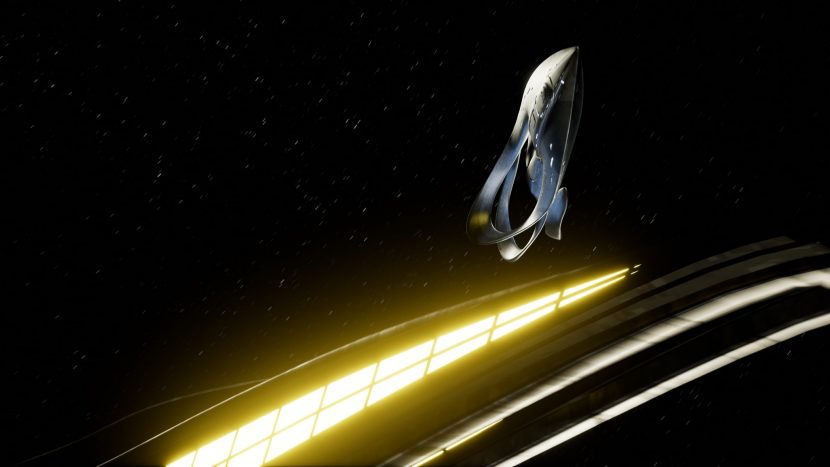
Halon had about 10 people working on the show at its busiest, using Maya and AfterEffects primarily. Once again the team used the Epic UE4 Engine. “Actually, not everyone was initially fully on board with using the UE4, but in the end, everyone really liked it. The coolest thing was that UE4 got around a lot of Maya limitations on how big the ‘world’ could be,” for the space battles and epic wide shots. Of the 13 episodes, just one was not done in engine and the rest were in UE4. Halon moved to UE4 when working on Planet of the Apes, while there was a “learning curve, it is really up to the challenges of doing fast episodic television shows,” pointed out DiGiordano.
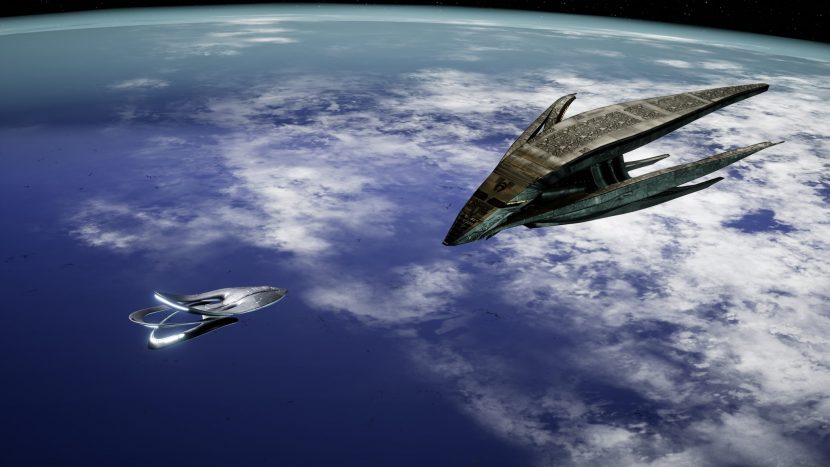
Halon created space battles, worm holes, exploding planets and other material for the new series. In addition to providing the basis for the motion control data to supplement model shoots of a practical scale model of the Orville, they also provided ‘point of view’ material displayed on a 18 X 104 foot LED screen, giving the actors a clear sense of what was happening outside the ship during their scenes. For example outside the bridge set the cast would see the world their scripts and dialogue were referring to. Coupled with interactive lighting and practical effects, this actually proved too much for on set daily use. Unfortunately the vfx were so effective that the vision needed to be edited in degrees of freedom before the actors could see it while in the set. In testing, when the effects team played the full rolling pitching video on the giant screen in the Orville bridge set, the crew standing inside immediately fell over – thrown by the optical illusion of the ship rolling when the set was actually static. Basically, one’s brain either causes you to lean over, and thus topple over or you suffer massive motion sickness. Neither option is something one wants to inflict on the actual actors while shooting on the sound stage.
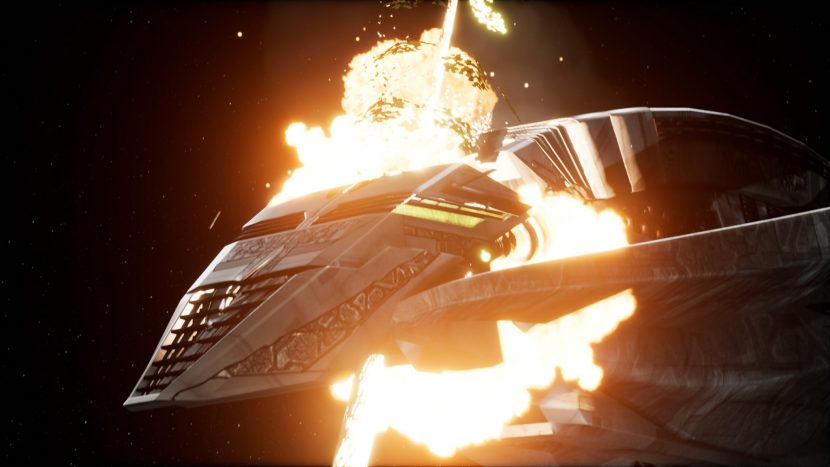
Halon contributed to the previs and production for all thirteen episodes of The Orville’s first season, supplementing and enhancing the work done with the practical vfx on set.
The final series has a large number of ‘normal’ digital visual effects, used for ships, phaser fire, environments, creatures and of course humour, such as ‘hugging the donkey’. Main visual effects are by Crafty Apes in Atlanta.
The first show rated well at 2.8 adults 18-49 rating and 8.6 million viewers. In this demographic, The Orville is best series premiere for a drama since NBC’s debut of their powerhouse: This Is Us.

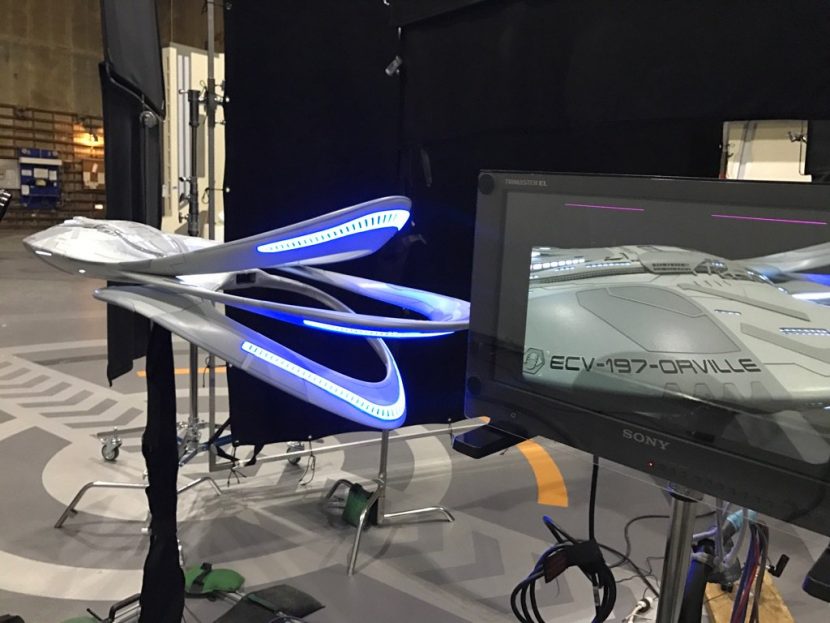
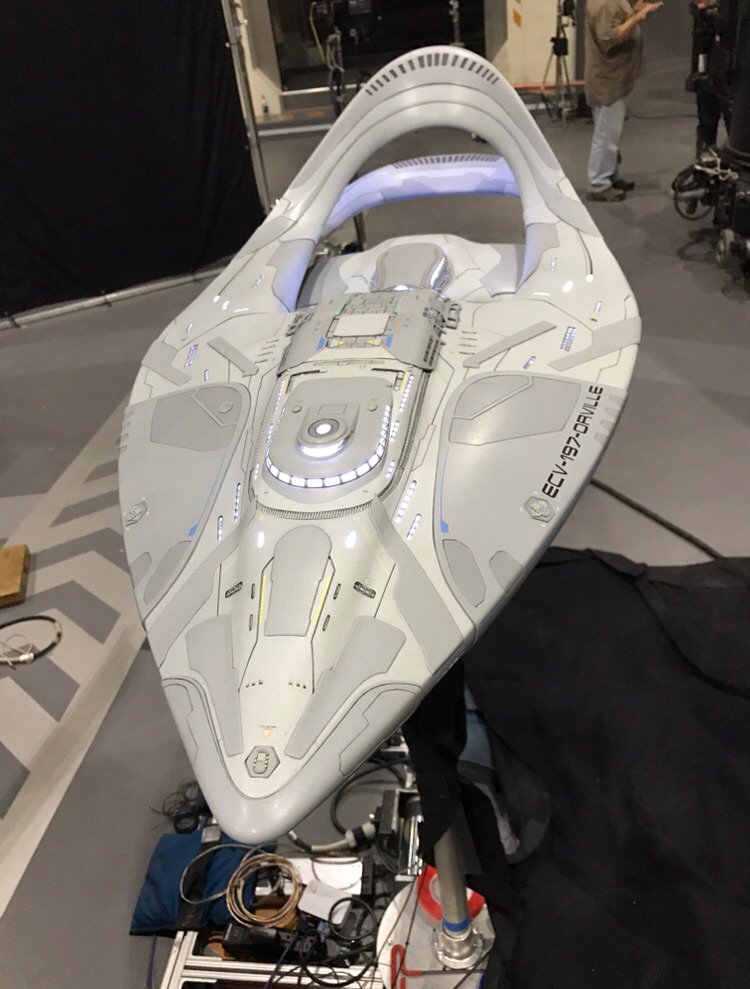
That is what it’s all about, learn from the past utilize the tools of the here and now to make it better for the future. Happy Arbor day!
Dion
Epic’s Unreal Engine 4 is mainly a real-time interactive video game engine. It’s got baked in Virtual Reality support. I would love them to release a VR “tour” of the exterior of The Orville.
Maybe even an annotated tour with voice snippets from Seth himself as the tour guide.
When is the model coming out? Love the ship,love the show. Have fun Seth and fans.
Dont suppose anyone wants to post the obj ot stl file so we can print out models? Scant lamemefortrying
Love this show. Funny when it needs to be and serious. Seth’s form of humor is for everyone. When ST:Discovery was to be aired i was ecstatic to see a new ST series. Watched a few episodes. This series is better,funnier and thought provoking. Seth takes the best of ST universe and makes it his own. Can’t wait to own the Orville. I have built and displayed most of the other models and this will be my next. Thanks Seth for bringing back “Star Trek” to the screen. I will look forward to the next season of The Orville. I will not watch ST:Discovery, boring.